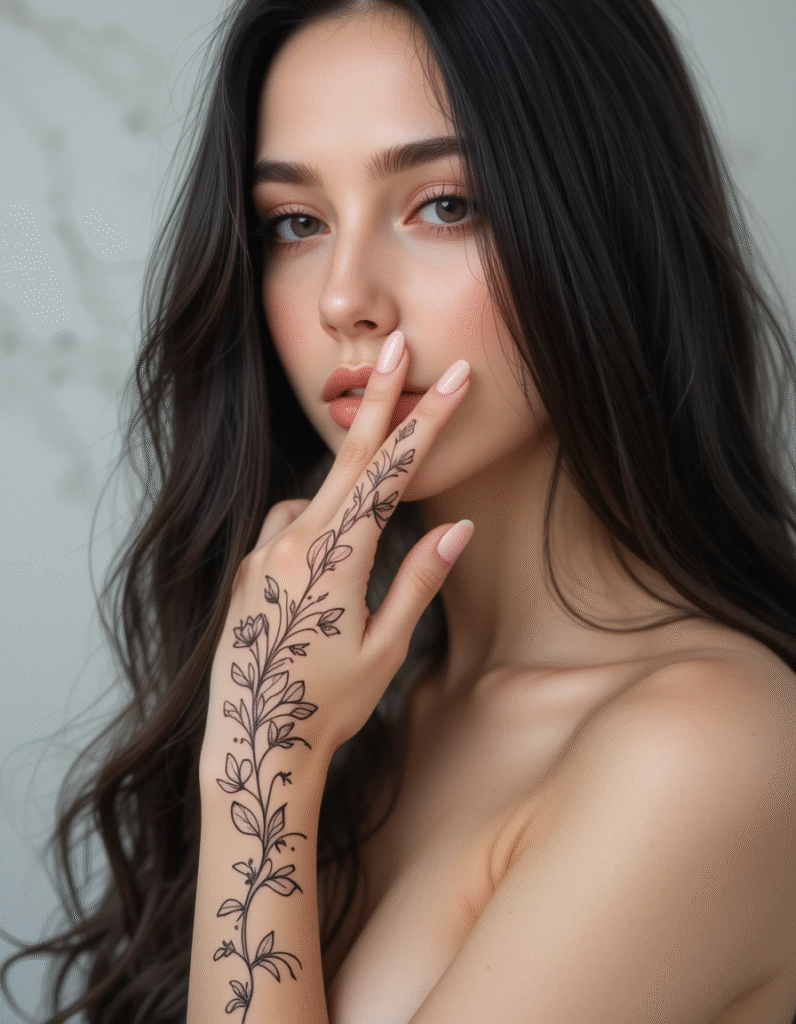In the evolving world of body modification and personal expression, a sophisticated trend has emerged that treats the human form as a complete canvas rather than isolated areas for decoration. The coordination of nail art with tattoo designs represents a new level of aesthetic consciousness, where every visible element works in harmony to create a cohesive visual statement. This integrated approach to body art demonstrates how thoughtful design can transform individual elements into a unified expression of personal style and artistic vision.
The Philosophy of Unified Aesthetics
The concept of coordinating nails with tattoos goes beyond simple matching – it represents a holistic approach to body art that considers how different elements interact visually and thematically. This philosophy treats the body as an integrated canvas where each decorative element enhances and complements the others, creating a harmonious whole that’s greater than the sum of its parts.
This approach has gained particular momentum in the age of social media, where close-up photography and detailed imagery have made the subtle interactions between different body art forms more visible and appreciated. The result is a growing awareness among both artists and clients that nail art and tattoos can work together to create more impactful and cohesive aesthetic statements.
The integration of these two art forms also reflects broader trends in fashion and design toward curated, intentional aesthetics where every element is considered and purposeful. Rather than collecting random pieces of body art, this approach encourages thoughtful planning and artistic consistency.
Design Harmony: Creating Visual Cohesion
Successful coordination between nails and tattoos requires understanding fundamental design principles that create visual harmony:
Color Palette Consistency: The most effective coordinated looks maintain consistent color relationships across both nails and tattoos. This doesn’t mean exact color matching, but rather working within complementary or analogous color schemes that create visual unity.
Style Synchronization: When botanical tattoos feature delicate line work and organic forms, nail designs that echo these qualities – perhaps through subtle floral accents or flowing lines – create natural harmony. The style language should speak the same aesthetic dialect.
Scale Relationships: Understanding how the scale of nail art relates to tattoo elements is crucial. Delicate tattoo work pairs well with refined, understated nail designs, while bold tattoos can support more dramatic nail art without visual competition.
Thematic Consistency: Beyond visual elements, successful coordination often involves thematic connections. Botanical tattoos might pair with nature-inspired nail art, while geometric tattoos could coordinate with architectural or mathematical nail designs.
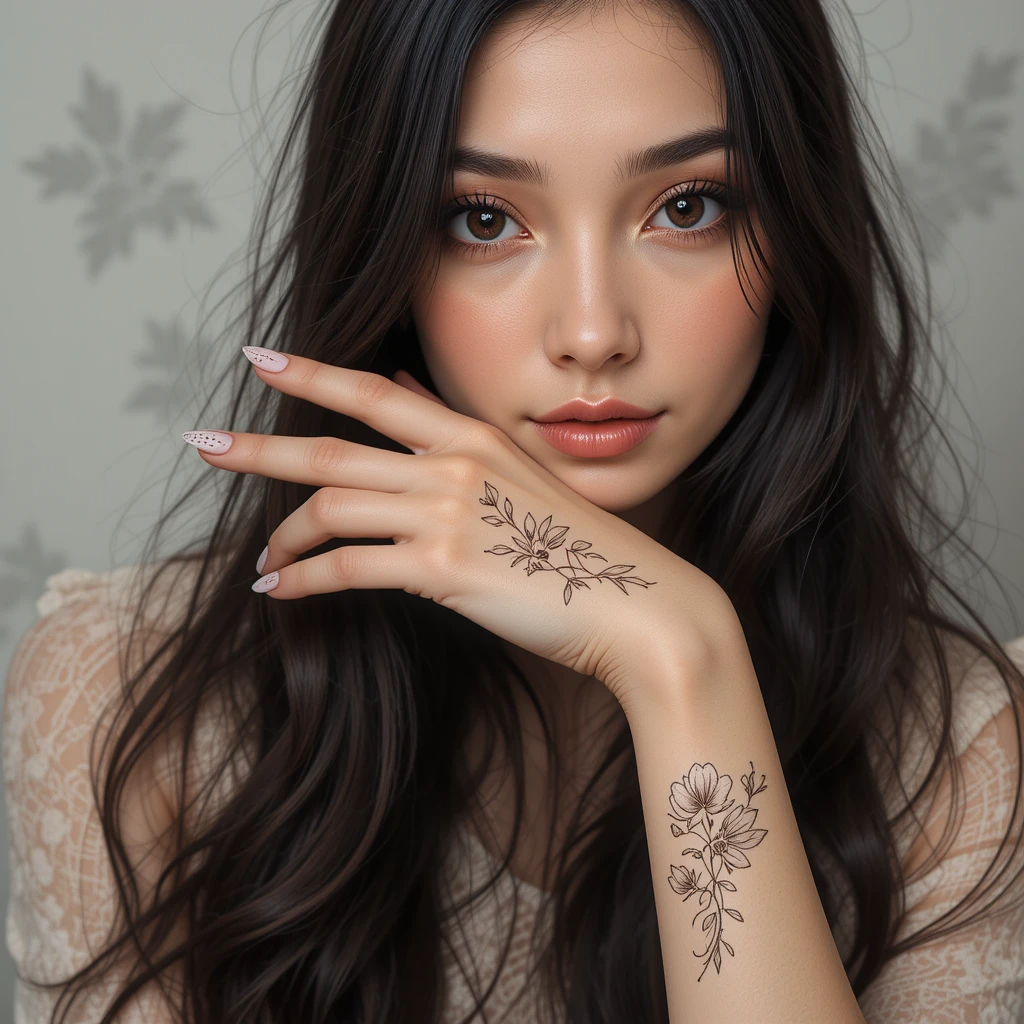
Technical Considerations for Artists
Creating coordinated nail and tattoo looks requires specific technical expertise and planning:
Cross-Medium Expertise: While few artists master both tattoo and nail art at the highest levels, successful coordination requires understanding both mediums’ possibilities and limitations. Collaboration between specialists often produces the best results.
Timing Coordination: Planning becomes crucial when fresh tattoos and nail appointments must be coordinated. Healing considerations for tattoos may affect timing for nail work, particularly when designs will be photographed together.
Color Matching Across Mediums: Achieving color harmony between tattoo ink (which sits beneath the skin) and nail polish (which sits on the surface) requires understanding how colors appear differently in each context.
Longevity Planning: Nail art is temporary while tattoos are permanent, requiring strategies for maintaining coordinated looks over time or planning for design evolution.
Popular Coordination Styles
Several distinct approaches to nail and tattoo coordination have emerged:
Minimalist Harmony: This approach pairs delicate, fine-line tattoos with subtle nail art – perhaps clear bases with tiny botanical elements that echo tattoo motifs. The emphasis is on refinement and understated elegance.
Botanical Coordination: Natural themes provide rich opportunities for coordination. Floral tattoos might be complemented by nail art featuring similar flowers, leaves, or organic patterns, creating a garden-like aesthetic across the hands.
Geometric Synchronization: Angular tattoos and geometric nail art can create striking modern looks where mathematical precision spans both mediums. These designs often emphasize clean lines and structured compositions.
Seasonal Theming: Some collectors coordinate both nails and tattoos around seasonal themes, with autumn leaves, spring flowers, or winter branches appearing across both canvases in harmonious arrangements.
Cultural Integration: Traditional cultural motifs can span both nails and tattoos, creating looks that honor heritage while maintaining aesthetic consistency.
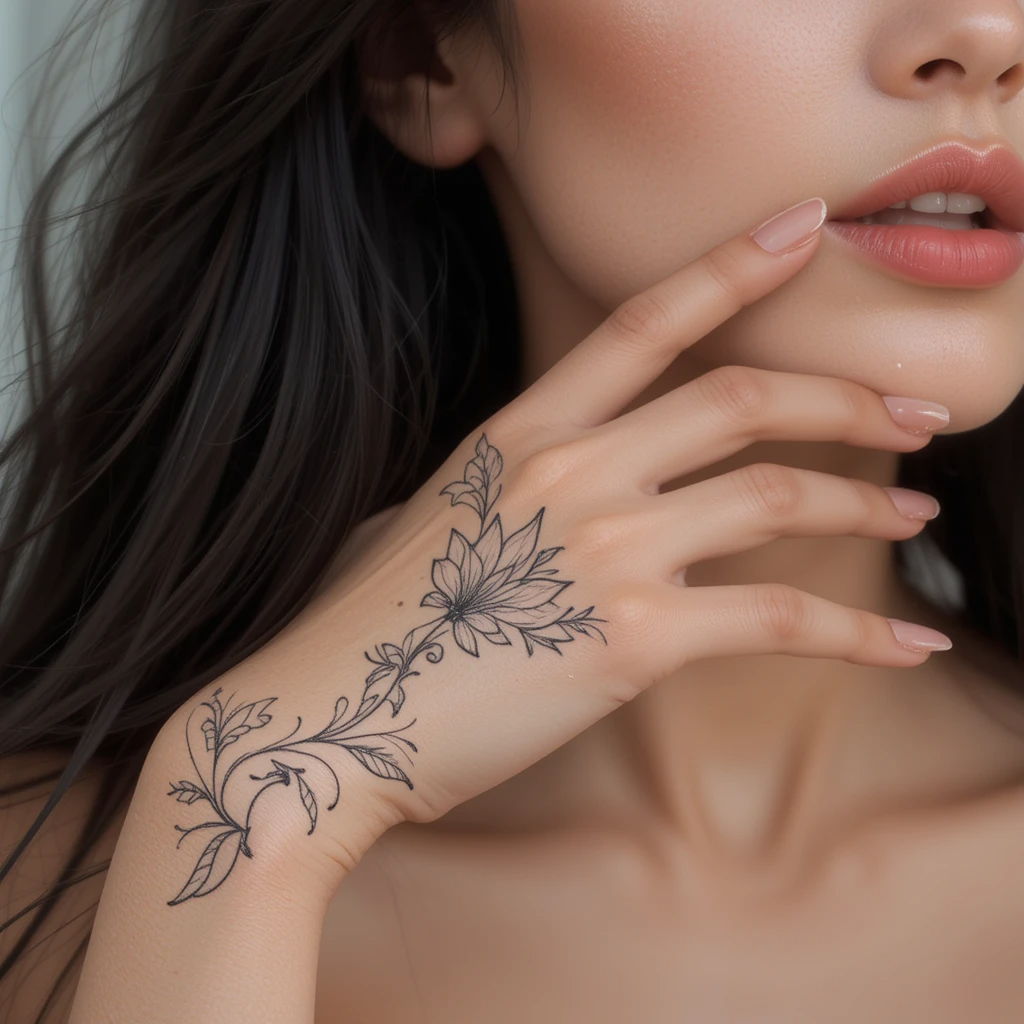
The Hand as Primary Canvas
Hand placement makes coordination between nails and tattoos particularly impactful:
Visual Proximity: When tattoos and nails occupy the same visual space, their interaction becomes immediate and unavoidable. This proximity demands careful coordination to avoid visual conflict.
Functional Considerations: Hands are used constantly throughout daily life, making durability and practicality important factors in both tattoo placement and nail art choices.
Professional Implications: Hand tattoos and elaborate nail art both carry workplace considerations that must be balanced with personal expression goals.
Photogenic Appeal: The hands’ natural positioning in photography makes coordinated hand art particularly effective for social media and artistic documentation.
Color Theory in Cross-Medium Design
Working with color across tattoo ink and nail polish requires sophisticated understanding:
Undertone Matching: Even when colors appear different on the surface, matching undertones can create harmony. Warm-toned tattoo work pairs naturally with warm nail colors, even in different hues.
Contrast Management: Sometimes coordination means creating deliberate contrast rather than matching. Understanding when to harmonize and when to contrast is key to effective coordination.
Lighting Considerations: Different lighting conditions affect how tattoo and nail colors interact. Successful coordination considers how the combination will appear in various lighting situations.
Aging and Fading: Tattoo colors change over time while nail colors are regularly refreshed. Planning for these different aging processes helps maintain long-term coordination.
Cultural and Social Implications
The coordination of nails and tattoos reflects broader cultural trends:
Self-Expression Evolution: This level of aesthetic coordination represents an evolution in how people approach personal style and self-expression through body modification.
Social Media Influence: Platforms emphasizing visual content have elevated the importance of photogenic coordination and aesthetic consistency.
Professional Acceptance: As both tattoos and elaborate nail art gain workplace acceptance, coordinated looks become more feasible for broader populations.
Gender Expression: Coordinated nail and tattoo art provides opportunities for gender expression that transcends traditional boundaries.
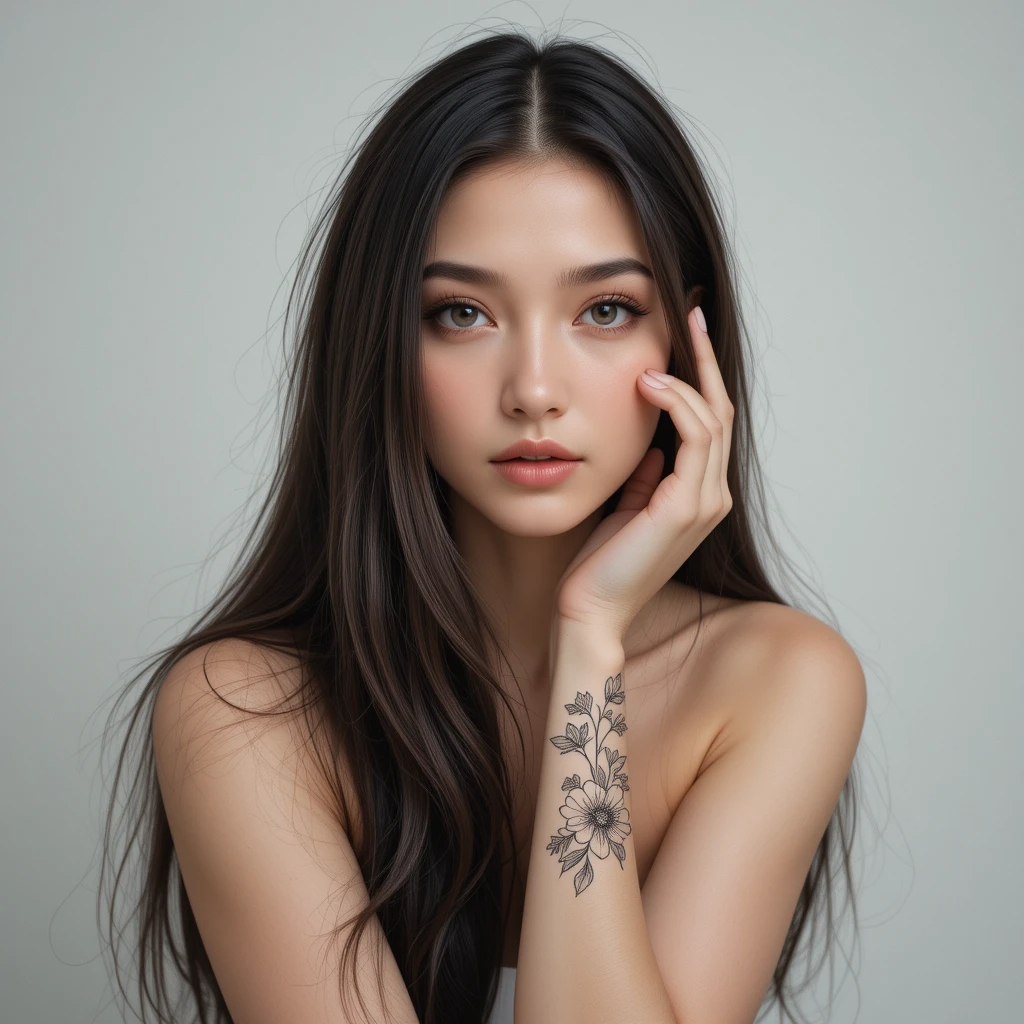
Practical Planning Strategies
Successful coordination requires strategic planning:
Design Development: Starting with overall aesthetic goals and working backward to specific design elements helps ensure coordination rather than forcing disparate elements together.
Artist Collaboration: When working with different artists for nails and tattoos, clear communication about coordination goals and design elements is essential.
Budget Considerations: Maintaining coordinated looks requires ongoing investment in both tattoo work and nail maintenance, requiring financial planning.
Lifestyle Integration: Coordination strategies must align with personal lifestyle, work requirements, and practical considerations.
Maintenance and Evolution
Coordinated nail and tattoo looks require ongoing attention:
Regular Updates: While tattoos remain constant, nail art requires regular refreshing to maintain coordination. Developing a rotation of complementary designs helps manage this.
Seasonal Adaptation: Coordinated looks can evolve seasonally, with nail art providing opportunities to refresh the aesthetic while tattoos remain constant.
Addition Planning: When adding new tattoos to coordinated looks, considering existing nail art preferences helps maintain overall harmony.
Documentation: Photographing successful coordinated looks helps track what works and provides reference for future coordination efforts.
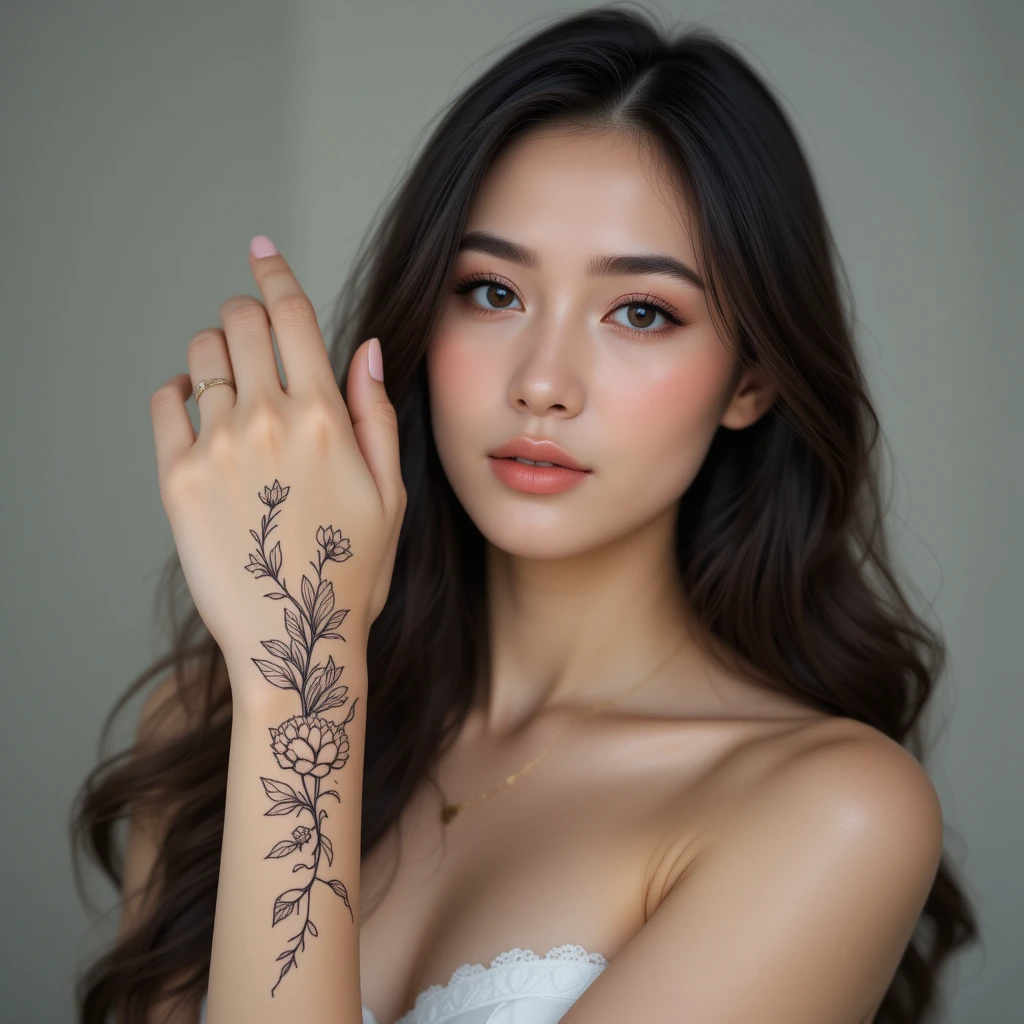
Professional Considerations
For those in professional environments, coordination requires additional planning:
Workplace Policies: Understanding professional requirements for both visible tattoos and nail art helps guide coordination choices.
Removability: Coordinated looks that can be toned down for professional requirements while maintaining some harmony provide practical flexibility.
Industry Variations: Different professional environments have varying tolerance levels, requiring coordination strategies that work within specific contexts.
The Psychology of Coordinated Aesthetics
The appeal of coordinated nail and tattoo art goes beyond mere visual harmony:
Control and Intention: Coordinated looks demonstrate intentionality and control over personal presentation, which can enhance confidence and self-expression.
Artistic Identity: This level of coordination often represents serious engagement with body art as legitimate artistic expression rather than impulsive decoration.
Community Connection: Coordinated aesthetics often connect individuals with like-minded communities that appreciate sophisticated approach to body modification.
Personal Branding: In an increasingly visual world, coordinated body art can function as a form of personal branding and distinctive identity creation.
Future Trends and Evolution
The coordination of nails and tattoos continues to evolve:
Technology Integration: Advances in both tattoo and nail art technology may provide new opportunities for coordination and matching.
Temporary Options: Development of longer-lasting nail options and temporary tattoo advances may make coordination more accessible and flexible.
Professional Services: Specialized services focusing on coordinated body art planning may emerge as demand grows.
Cultural Expansion: As acceptance grows globally, coordinated body art may incorporate diverse cultural traditions and aesthetics.
Choosing Coordinated Professionals
Finding artists who understand coordination requires specific considerations:
Cross-Medium Awareness: Look for professionals who understand both nail art and tattoo work, even if they don’t practice both.
Portfolio Coordination: Review portfolios for evidence of understanding visual harmony and design coordination principles.
Collaboration Skills: Artists must be willing to work with other professionals and consider designs beyond their specific medium.
Planning Expertise: Professionals should demonstrate ability to plan coordinated looks that consider timing, maintenance, and evolution.
The coordination of nail art and tattoos represents a sophisticated evolution in body art that treats personal presentation as a unified aesthetic experience. This approach demands higher levels of planning, artistic understanding, and commitment, but rewards practitioners with uniquely cohesive and impactful personal style statements.
As both nail art and tattoo work continue to gain cultural acceptance and artistic recognition, their coordination represents the natural progression toward treating the body as a complete canvas for artistic expression. This integration challenges both artists and clients to think more broadly about body art while creating opportunities for unprecedented levels of aesthetic sophistication and personal expression.
The future of coordinated body art lies in continued evolution of techniques, growing cultural acceptance, and increasing recognition that thoughtful coordination can elevate individual elements into something greater – a complete artistic statement that reflects not just personal taste, but artistic vision and aesthetic consciousness.

